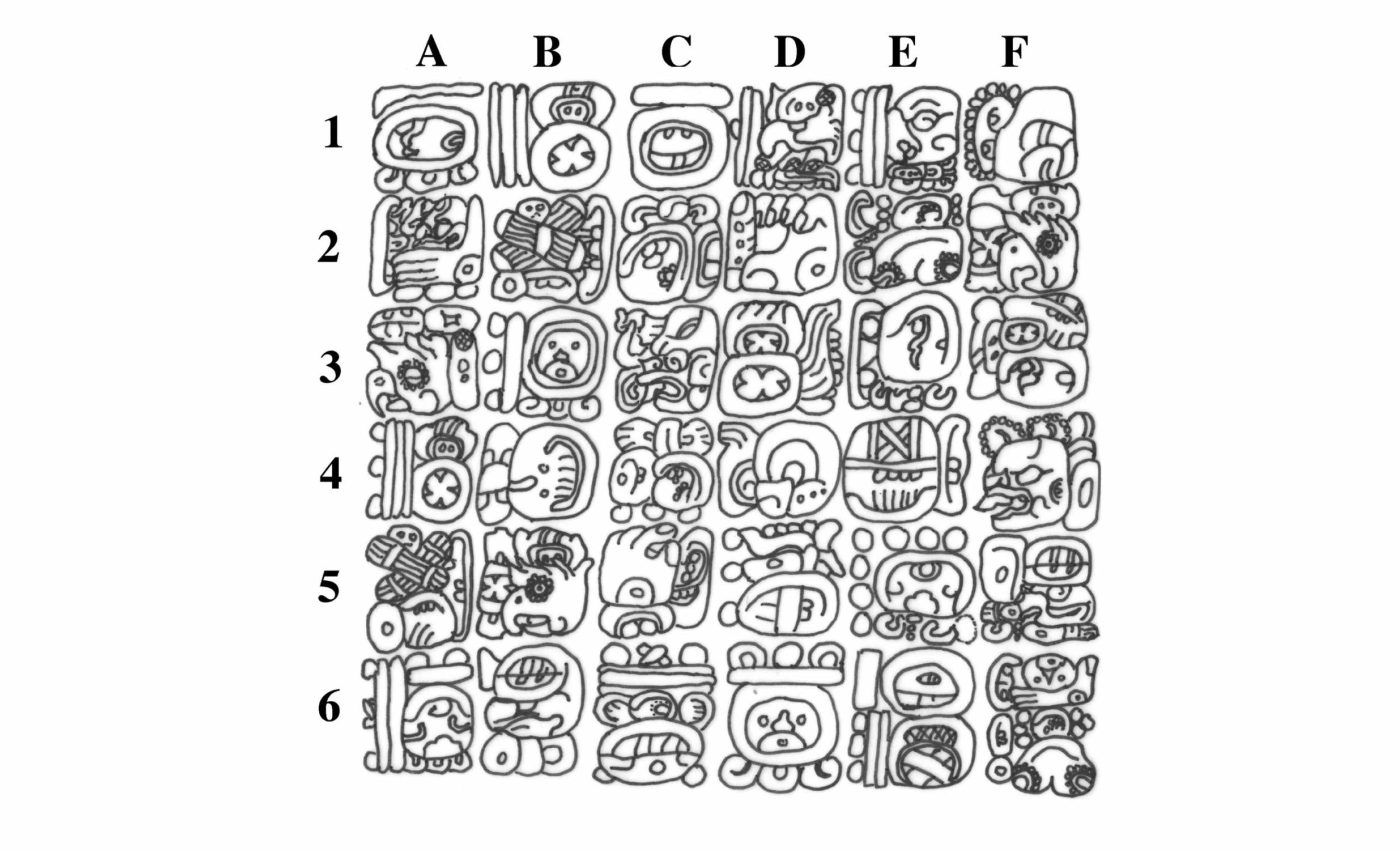
Mayan altar may conceal secret code used by the kingdom's rulers at the time
A new analysis argues that the carved hand shapes on Altar Q at Copan encode four calendar dates, not just royal poses. The monument is 1,300 years old and sits in western Honduras.
Long Count, the Maya system that counts days in nested cycles, anchors the claim in math. The hand shapes appear in sequences that match how dates are written when smaller units end in zero.
The work was led by Rich A. Sandoval, a linguistic anthropologist at Metropolitan State University of Denver (MSUD). His research focuses on how signs and writing intertwine in ancient Mesoamerica.
Altar Q shows 16 Copan rulers, each seated and holding a torch. A museum record confirms that all four sides display the dynasty in order, which is key for reading patterns in the hands.
Copan altar and Maya time
Sandoval’s study proposes that two recurring hand forms act as numerical zeros in dates. In Maya notation, zeros signal period ending, dates when lower cycles reset to zero, so zero-like hands should cluster there.
He argues the altar’s four panels each spell a full Long Count date, with the upper rim and four heads forming a stylized nine for the b’ak’tun, a cycle of about 400 years. The four free hands below then give counts for k’atun, tun, uinal, and k’in left to right.
One panel resolves as 9.0.2.0.0, the death date of the founder Yax K’uk’ Mo’, the first ruler of the Copan dynasty, which also sums to 16 in the 260 day and 365 day Calendar Round, a 52 year cycle combining two calendars.
Another panel reads 9.19.10.0.0, the death date of the final ruler Yax Pasaj. Those two dates bookend the dynasty inside the ninth b’ak’tun and explain why zero-like signs cluster at the right ends.
The third and fourth panels tie into a 64 day ritual recorded on top. One key day in that span, 9.17.5.0.15, falls on a number pair that also totals 16, echoing the altar’s 16 rulers.
Why 16 keeps showing up
Sixteen is not numerology for its sake. It marks both the count of rulers and a pattern in date pairs, so Sandoval tracks it through the altar’s calendar math.
It also links a second date, 9.16.13.12.0, to the 64 day sequence through a distance of 4,096 days, which is 16 by 16 by 16.
That 4,095 day interval, the space between the endpoints, is five cycles of the 819 Day Count, a ritual count tied to visible planets, and also seven Venus cycles.
Making the case
The hand shapes repeat where zeros should appear, and non zero forms are all distinct. The four panels line up with four discrete dates, a structure expected on a square altar oriented to the cardinal directions.
Two arithmetic checks help. Short distance number phrases in the text match the gaps between one inscribed date and two of the proposed panel dates, a plain test many Maya inscriptions pass.
The panel rims and four heads form a bar and dot nine, a visual cue for the ninth b’ak’tun. That cue fits the dynasty’s span and tone.
Not everyone is convinced. One expert noted that the interpretation appears implausible, based on concerns that some of the visual and textual details seem adjusted to fit the hypothesis.
The researcher counters that several independent clues align toward the same conclusion and argues that, while each piece may seem weak on its own, together they offer strong support for the interpretation.
Why the Copan altar matters
Hand signs here do not translate the hieroglyphs one to one. They supply different data, mostly numbers, while the hieroglyphs narrate ritual actions and titles.
If true, the altar shows a dual script system. One stream is read in blocks, the other as coded hands that a scribe embedded in the scene of a ceremony.
A script that mixes drawn hands with hieroglyphs would expand how we think about writing systems. It could also explain why some Copan texts list fewer dates than expected.
The approach suggests a fresh cataloging job. Figural hands across monuments might carry values, not only social cues, and that would matter for reading timelines.
Future surveys can code handshape, placement, and orientation across sites. With consistent rules, patterns could expose a cipher, a fixed mapping from forms to values.
The bold claim rests on careful counting, plus well known Copan history, like the 16 rulers and the 64 day rite. It adds a new way to read elements that were assumed to be artistic.
Future tests are straightforward. Scholars can check other monuments for the same zero-like clustering and for two handed symmetry on numbers that are multiples of five.
The study is published in Transactions of the Philological Society.
—–
Like what you read? Subscribe to our newsletter for engaging articles, exclusive content, and the latest updates.
Check us out on EarthSnap, a free app brought to you by Eric Ralls and Earth.com.
—–













